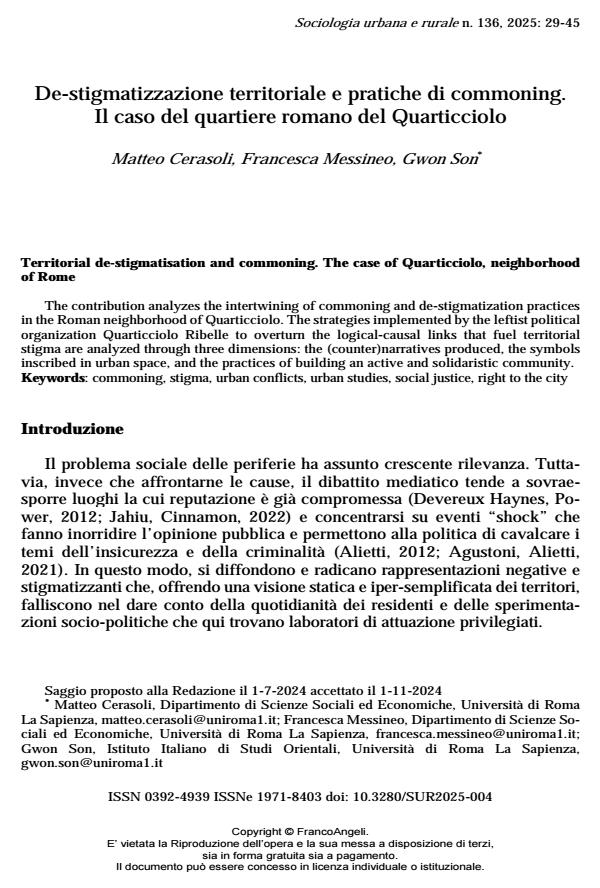De-stigmatizzazione territoriale e pratiche di commoning. Il caso del quartiere romano del Quarticciolo
Titolo Rivista SOCIOLOGIA URBANA E RURALE
Autori/Curatori Matteo Cerasoli, Francesca Messineo, Gwon Son
Anno di pubblicazione 2025 Fascicolo 2025/136
Lingua Italiano Numero pagine 17 P. 29-45 Dimensione file 150 KB
DOI 10.3280/SUR2025-136004
Il DOI è il codice a barre della proprietà intellettuale: per saperne di più
clicca qui
Qui sotto puoi vedere in anteprima la prima pagina di questo articolo.
Se questo articolo ti interessa, lo puoi acquistare (e scaricare in formato pdf) seguendo le facili indicazioni per acquistare il download credit. Acquista Download Credits per scaricare questo Articolo in formato PDF

FrancoAngeli è membro della Publishers International Linking Association, Inc (PILA)associazione indipendente e non profit per facilitare (attraverso i servizi tecnologici implementati da CrossRef.org) l’accesso degli studiosi ai contenuti digitali nelle pubblicazioni professionali e scientifiche
The contribution analyzes the intertwining of commoning and de-stigmatization practices in the Roman neighborhood of Quarticciolo. The strategies implemented by the leftist political organization Quarticciolo Ribelle to overturn the logical-causal links that fuel territorial stigma are analyzed through three dimensions: the (counter)narratives produced, the symbols inscribed in urban space, and the practices of building an active and solidaristic community.
Parole chiave:commoning, stigma, urban conflicts, urban studies, social justice, right to the city
Matteo Cerasoli, Francesca Messineo, Gwon Son, De-stigmatizzazione territoriale e pratiche di commoning. Il caso del quartiere romano del Quarticciolo in "SOCIOLOGIA URBANA E RURALE" 136/2025, pp 29-45, DOI: 10.3280/SUR2025-136004